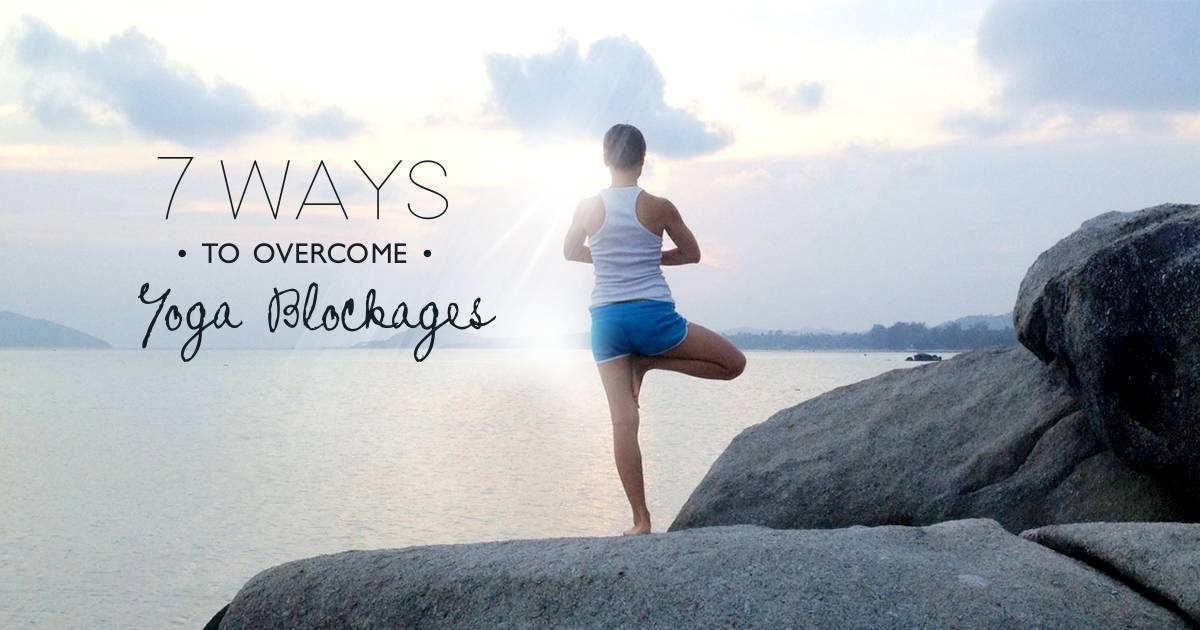Do you sometimes look at a pose and feel “I’ll never be able to do that”? If we only focus on the result, as in an accomplished pose, we miss half the fun of seeing our own practice unfold. Yoga is a discipline that takes heaps of practice, an ounce of theory and yet more practice. Having fixed ideas as to where you should be in each pose can be discouraging but becoming aware of where we are at and why can be hugely beneficial in moving forward.
Step 1 Try alternatives.
Follow your teacher’s guidance and make choices when options are given for difficult poses, for instance if you feel that you can’t go up into Sirsasana (head stand) just yet, practice dolphins to strengthen your arms and upper body. Don’t get discouraged and avoid trying the pose altogether but try an easier version or a pose that will help you strengthen in order to get there with practice.
Step 2 Observe your resistance and work with it rather than against it.
Quiet often our resistance comes from fear, fear of falling, fear of injury, fear of not being able to do the pose or just simply fear. Fear is an emotional indicator and it’s best to lovingly challenge it gradually. You can find yourself going into Savasana (relaxation pose) every time fear pops up or you can try to do a little bit of the pose. Being gentle with your resistance and breathing into the areas of tightness can ease the struggle.
Step 3 Check in with your breath.
Inhale, exhale and have a split second in between to see if agitation is there. If so, adjust the asana. There’s not much millage in going into any pose, if you can’t breath deeply. Use your breath wisely, listen to it, feel it and let it be your guide. Breath is the main mirror as to how well a pose is being mastered.
Step 4 Aim to be steady and relaxed in each yoga pose.
Here’s a wonderful key that will open up your asana practice, feel how stable and comfortable you are in each pose. If a pose is too shaky or wobbly, then you may need to adjust so that you are not stretching your body so far. If you feel steady and you can maintain where you are, then you may even be able to take the pose further. Relax your effort.
Step 5 Be mindful of your own range of movement.
We all have different bodies, physical conditions and capabilities. Pushing too hard into a pose, could end up in injury and not going deep enough into it, may not give you the full benefit of the pose. Find your own gauge to measure how deep to go by getting to know your body and become mindful of your own range of movement.
Step 6 Realign your motivation with a positive mental attitude.
Observe where you are at in each pose and find one thing at a time that you can improve in each pose. Consolidate that one thing through practice and observe how your body builds the habit of finding the pose and step-by-step going deeper into it. Avoid an inner attitude of being at war with specific asanas. Nourish your yoga practice by aligning your motivation with a kind and gentle observation of your mental attitude.
Step 7 Acknowledge your achievements.
Take a few seconds before you come out of Savasana (final relaxation) to tell yourself inwardly what was great about the session and if you feel you have advanced a tiny little bit in a particular asana, acknowledge that to yourself. You are your only witness to your practice and gratitude towards your dedication to practise will be a huge booster.

Excellent article.